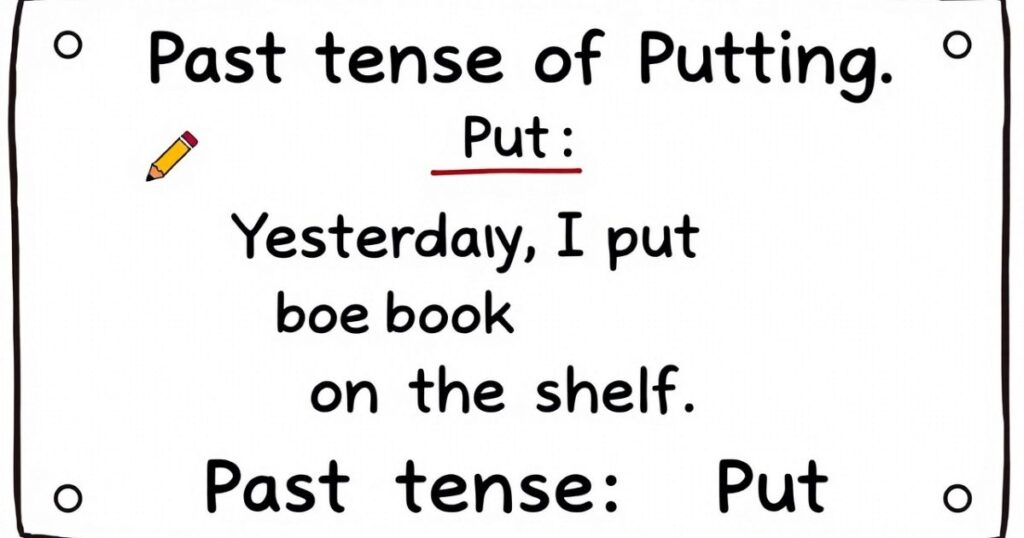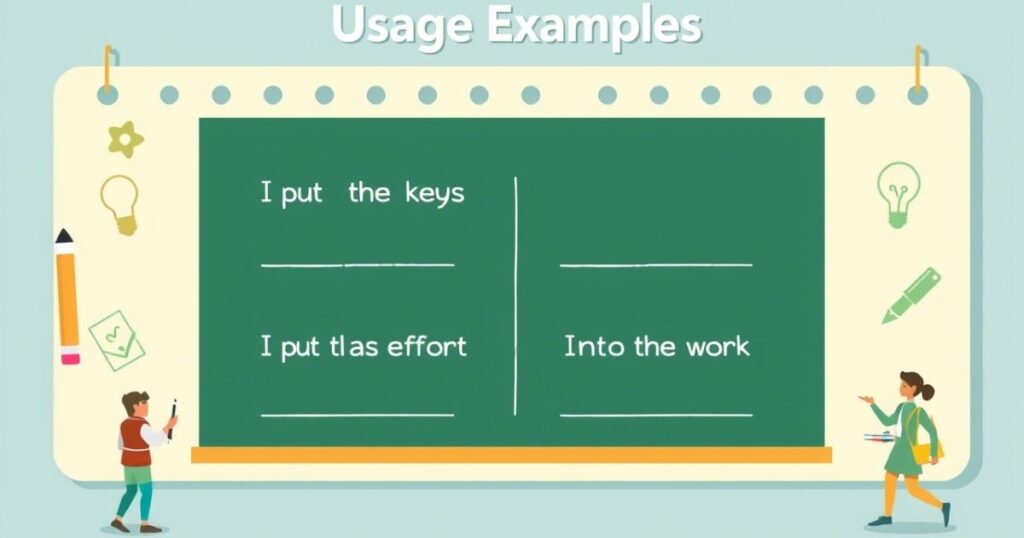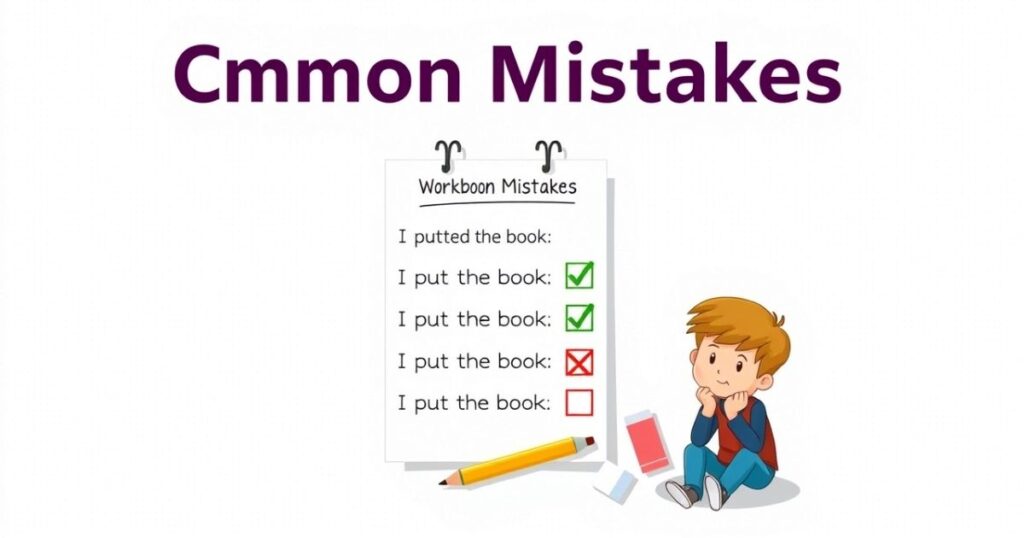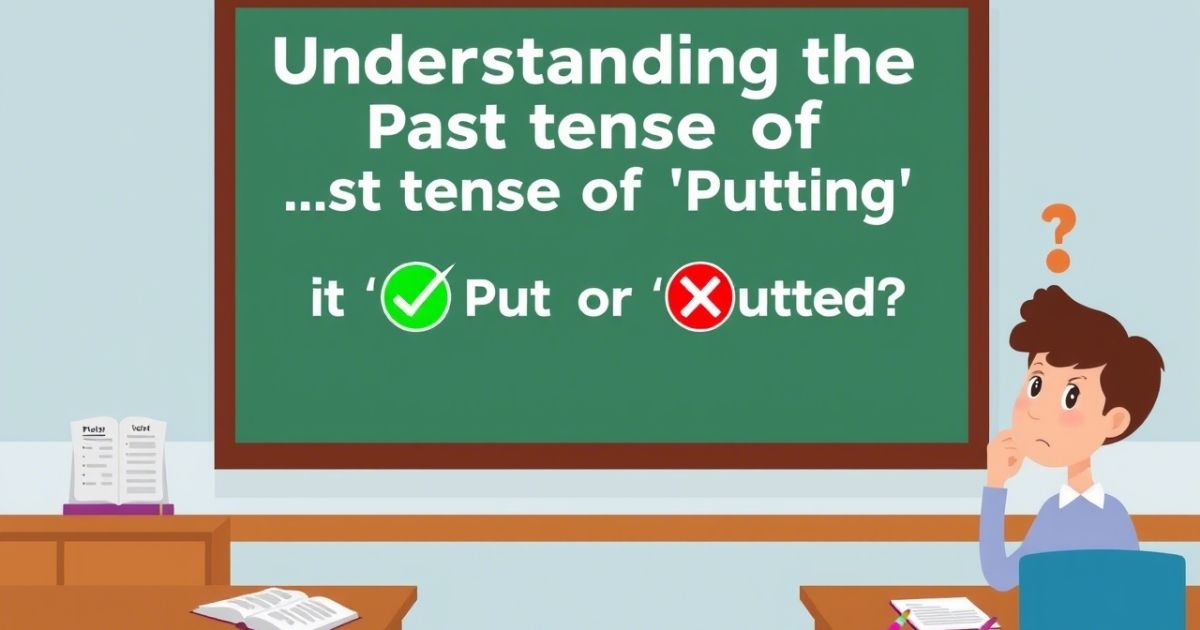Many people feel unsure when trying to use the right past tense of “putting.” It’s a common point of confusion in English grammar, especially since some verbs don’t follow regular patterns. Unlike words like “walked” or “jumped,” the verb “put” is irregular. That means it doesn’t change in the past, present, or future. Understanding the Past Tense of ‘Putting’ is important to avoid mistakes in everyday conversation.
Some might think “putted” is correct, but it’s only used in golf when describing a stroke. In normal usage, the past tense stays as “put.” Understanding the Past Tense of ‘Putting’ helps learners improve their grammar and speak with confidence. Understanding the Past Tense of ‘Putting’ becomes much easier once you know the rule, and remembering it can make your writing and speech more accurate.
Past Tense of ‘Putting’

The past tense of “putting” is simply “put.” If you are talking about something you did yesterday or at any time in the past, you should use “put.” For example, if you placed something on a shelf yesterday, you would say, “I put the book on the shelf yesterday.” Notice that the word “put” does not change regardless of the time,whether you are speaking in the present, past, or future tense.
This is because “put” is an irregular verb. Irregular verbs are different from regular verbs, which follow a rule of adding “-ed” to form the past tense (like “talk” becoming “talked”). With irregular verbs like “put,” the verb form remains the same in both the present and past tense. To illustrate, here are some examples:
- Present: “I put the keys on the table.”
- Past: “I put the keys on the table yesterday.”
- Future: “I will put the keys on the table tomorrow.”
- Past Participle: “I have put the keys on the table.”
Understanding that “put” stays the same across all forms makes it easier to avoid confusion when speaking or writing in English. So, whether you’re talking about placing a book on a shelf, putting groceries in the fridge, or putting your coat on a hook, you can always rely on the verb “put” for the past tense.
Read this Also: What is the Past Tense of See and its Past Participle?
Usage Examples

Let’s look at some real-life examples to make sure you fully understand how to use “put” in different situations. Imagine you are telling a friend what you did yesterday. You might say, “Yesterday, I put my phone on the kitchen counter.” This is a perfect example of how “put” functions as the past tense. The word “put” is the same as if you were talking about doing it today or in the future, which makes it easy to remember.
Another example could be, “She put the finishing touches on the painting.” Here, “put” is again used in the past tense to describe an action that was completed. Whether it’s placing something in your pocket, putting your keys in a drawer, or putting food away in the fridge, you always use “put” to describe these actions in the past.
You may be wondering, “What about when someone mistakenly uses ‘putted’?” Well, “putted” is only correct when referring to a stroke in the game of golf, such as when a golfer “putts” the ball on the green. Outside of golf, however, using “putted” is incorrect. For example, saying “I put the book on the shelf” is wrong. It should be “I put the book on the shelf.”
Here’s a simple and clear Usage Examples table using the word “put” in different tenses. These examples will help reinforce your understanding of how “put” works as an irregular verb:
| Tense | Example Sentence |
| Present | I put the book on the shelf every morning. |
| Past | Yesterday, I put the book on the shelf. |
| Future | Tomorrow, I will put the book on the shelf. |
| Present Continuous | She is putting the groceries in the fridge. |
| Past Continuous | He was putting the keys in his pocket. |
| Present Perfect | I have put the clothes in the closet. |
| Past Perfect | They had put their phones on silent before the movie. |
| Future Perfect | By noon, I will have put everything away. |
Common Mistakes

One of the most common mistakes people make with the verb “putting” is using “putted” instead of “put.” As we discussed earlier, “putted” only works in the context of golf. So, if you’re not talking about golf, avoid using “putted” to describe past actions. Many English learners get confused because “put” seems like it should follow the same pattern as regular verbs, where you add “-ed” to make the past tense. However, because “put” is an irregular verb, it doesn’t change.
For instance, it’s incorrect to say, “I put the keys on the table yesterday.” The correct sentence is, “I put the keys on the table yesterday.” Another common mistake could be: “I put my coat on the hook.” The correct form would be, “I put my coat on the hook.” These simple errors can cause confusion, so it’s essential to remember the correct form.
To make sure you don’t fall into the trap of using “putted,” it’s a good idea to practice using “put” in your sentences. Remember that the past tense of “putting” is always “put,” no matter the time or context. It’s a small detail, but it can make your English sound more natural and precise.
Conclusion
Understanding the Past Tense of ‘Putting’ is key to speaking and writing correctly in English. The past tense of “putting” is always “put,” no matter when you are talking about the action. It’s a simple rule, but it can be confusing for some, especially when people mistakenly say “putted.” However, by remembering this rule, you can avoid common mistakes.
So, when you’re Understanding the Past Tense of ‘Putting’, remember to use “put” for the past tense. It never changes, whether you’re talking about yesterday or in the future. This simple tip will help you communicate more clearly and sound more natural in English. Keep practicing, and you’ll get it right every time! Understanding the Past Tense of ‘Putting’ makes English easier to learn and use confidently.

Gramcoachpro is your go-to platform for mastering grammar, writing, and communication skills. If you’re a student, teacher, or content creator, we provide easy-to-understand tips, examples, and tools to improve your language — fast and effectively. Our mission is to make better writing simple and accessible for everyone.

